We hired a car in Kefalos in order to do some provisioning, visit several sites of historic interest, and view the marina in Kos town, at the other end (NE) of the island prior to the arrival of two UK friends. Stocking up was easy at the sole Lidl store on the island, but we were amazed to subsequently find a newly opened Tesco.

The town of Kos was enjoyable with its narrow streets, Roman ruins, and a well developed marina. It is very much a tourist destination, most of the signs are in English, with bars advertising live UK soccer games on large TVs, and a plethora of 2 and 4 seater road-legal (at least in Kos) dune buggies, which often slowed the road traffic. We passed on the numerous beaches, which are a great enticement for most tourists, with their sand, umbrellas, lounge chairs, and abundant water sport offerings. Kos was the site of one of the first medical schools, the ruins at three different levels, are a tourist attraction just outside Kos. The legend has it that the Asclepeion was built by Hippocrates, but this is not supported by data, some of which indicate that Hippocrates died decades before its construction during the Hellenistic era.


Prior to the arrival of our friends, Cheryll and John from Emsworth, we moved the boat to Kos marina for three days (26nm, 6.5 hours with flukey winds along the southern coast); an easy 30 min taxi ride from the airport. The day following their arrival was spent walking the streets of Kos, viewing some of the Roman ruins, and clambering around the ruins of the Knights Hospitaller fort, built in 1315, which abuts the entrance to the original harbour. The Knights Hospitaller must have been well financed as apart from the large forts built on Rhodes and Malta, there are numerous other smaller forts on islands dotted around eastern Med, including Bodrum, Kos, and others. The Odeon is a relatively small, recently renovated theatre (lots of cast concrete), not really very interesting after visiting much grander sites in Turkey. However, the Casa Romana, a Pompeian-type villa dating from the late 2nd and early 3rd centuries with 36 rooms and 3 open spaces, was surprisingly complete and had good explanations of various rooms, including drainage systems and how they did their laundry, for example. Kos, like many other Greek islands has seen many civilizations, Mycenaeans (some of whom fought in the Trojan Wars), Persians, Greeks, Romans, Byzantines, Genoese, Ottomans, Italians and Germans during WW2. Kos wasceded to Greece by the British in 1947 following the Paris peace treaty. Kos is the third largest Greek island.




Our next stop was Nisyros, a small volcanic island 23 nm SW from Kos: population around 1,000. According to mythology Nisyros was formed when Poseidon, using his trident, broke off a piece of Kos and threw at the fleeing giant Polybotes, burying him. We experienced some interesting sailing with winds suddenly gusting to 20+kts off the mountains of Kos. Given that Nisyros is volcanic there are essentially no bays in which to anchor, so we chose the small marina at Paoli, a few kilometres east of the main port at Mandraki. Another Med mooring experience, the first for our new crew, exacerbated by the windlass stopping after we had started reversing towards the dock wall. Fortunately, the wind was not blowing too hard and it was a quick fix (the breaker), although we were stuck in the middle of the fairway for a few minutes. The restaurants and rental car companies around the marina were very welcoming. Maria at Manos Car Rentals was a great host, she spoke English with an Aussie accent. The company also offered laundry, showers (€3), and toilet facilities.
We rented a car for the day to tour the island, visit the dormant caldera (3-4 km wide, formed within the last 150,000 years), and several small towns including Nikia (at 400m, it supposedly has one of the best ’squares’ in the Aegean, great views, and food), a natural sauna in a small cave (very effective), and an ancient fort, before an evening meal at a waterfront restaurant in Mandraki. We had two very good meals in Paloi, goat being one of the local dishes. With John’s help we fixed a few boat issues and spent time enjoying ourselves at the beach bar in between dips in the crystal clear water. Paleokastro is the ancient fort west of Mandraki, purportedly built around 350 BC, with much of the city walls and two gates stil relatively intact.
The interlocking volcanic stones in the walls are impressive, and its difficult to imagine how the ancients created such elaborate structures. In 1315 the Knights Hospitaller, after paying rent to a Genoese family, were permitted to settle on the island and built a castle there. Perlite and pumice provided sources of revenue for the island.





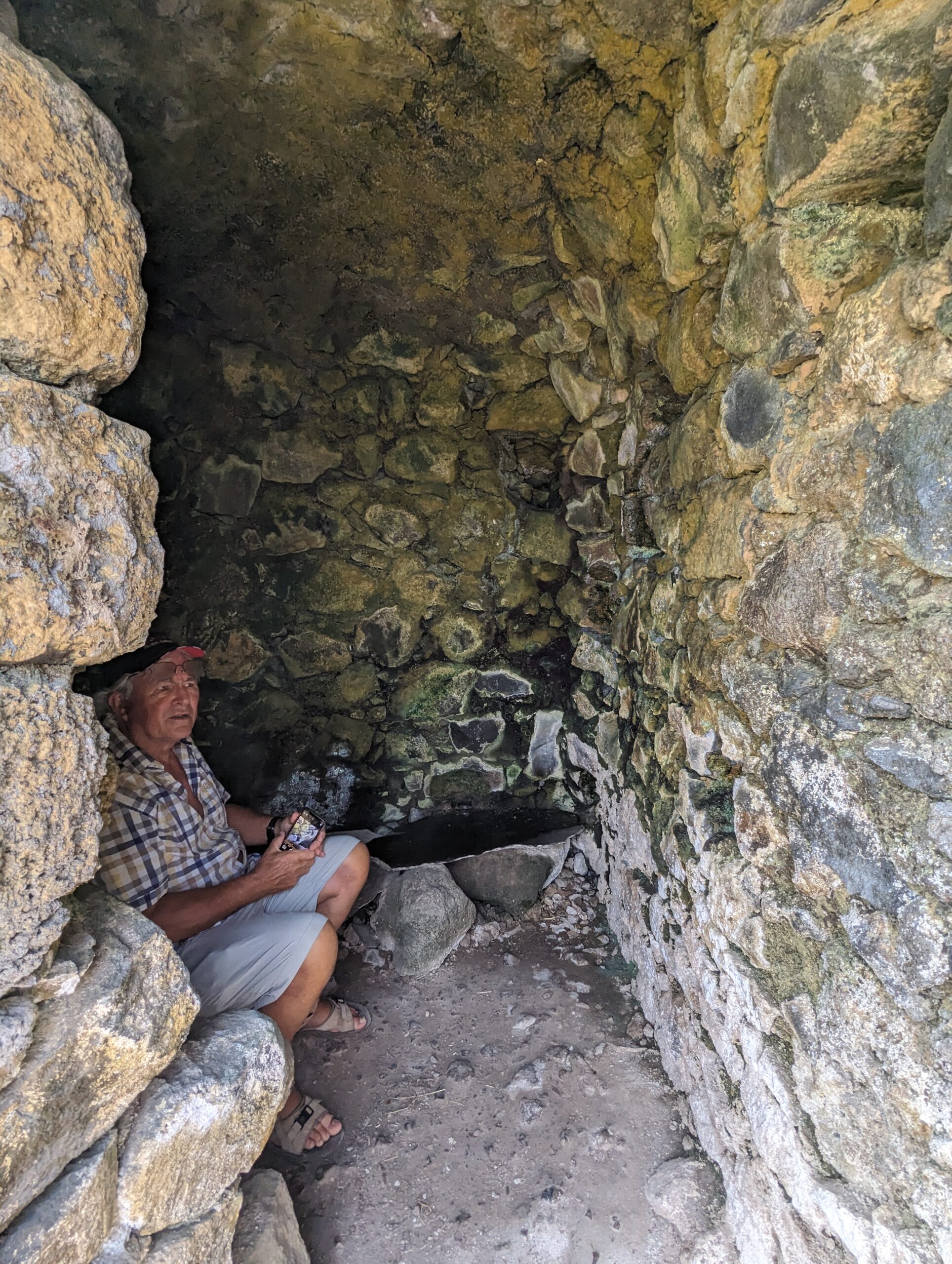


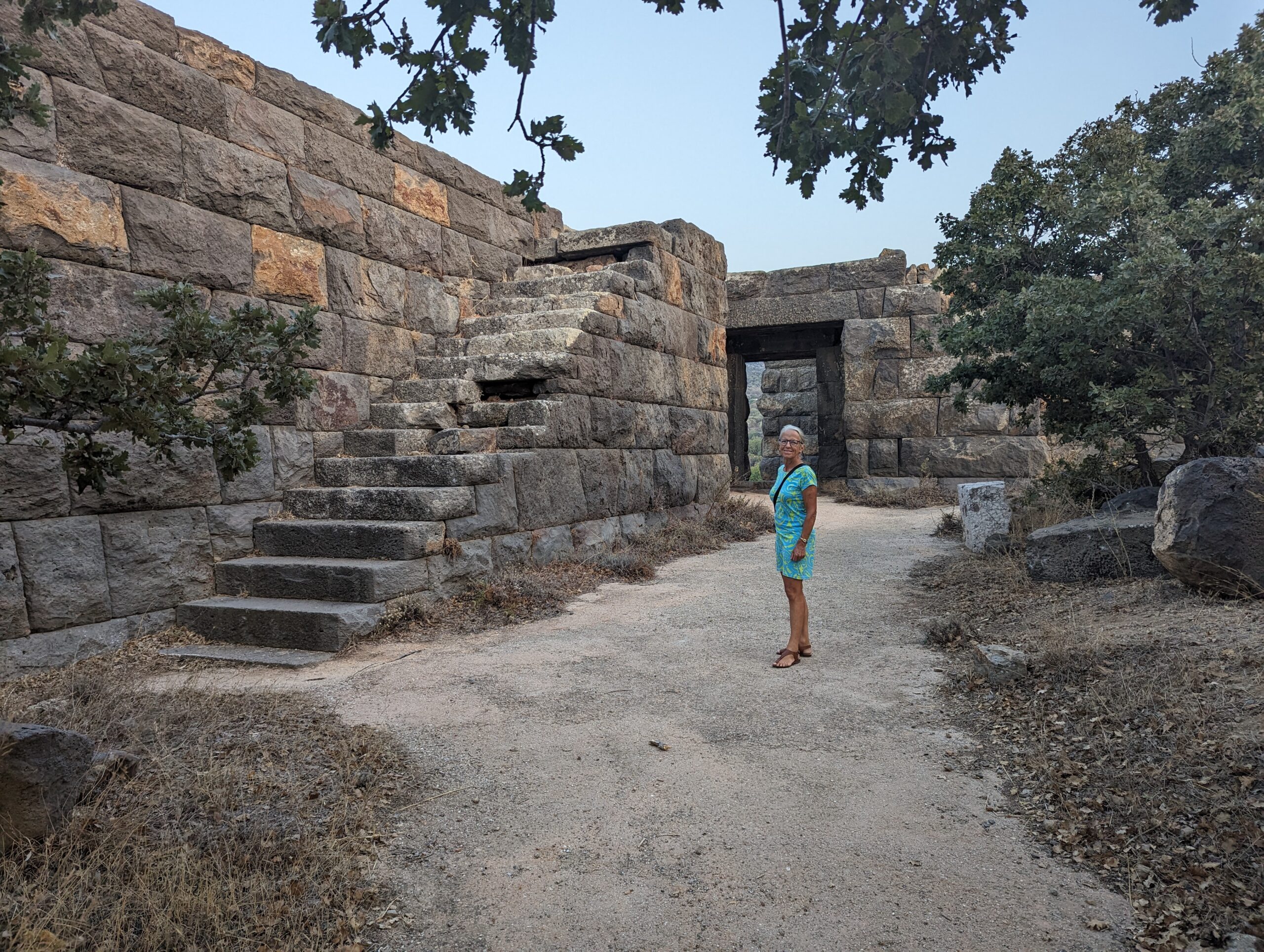

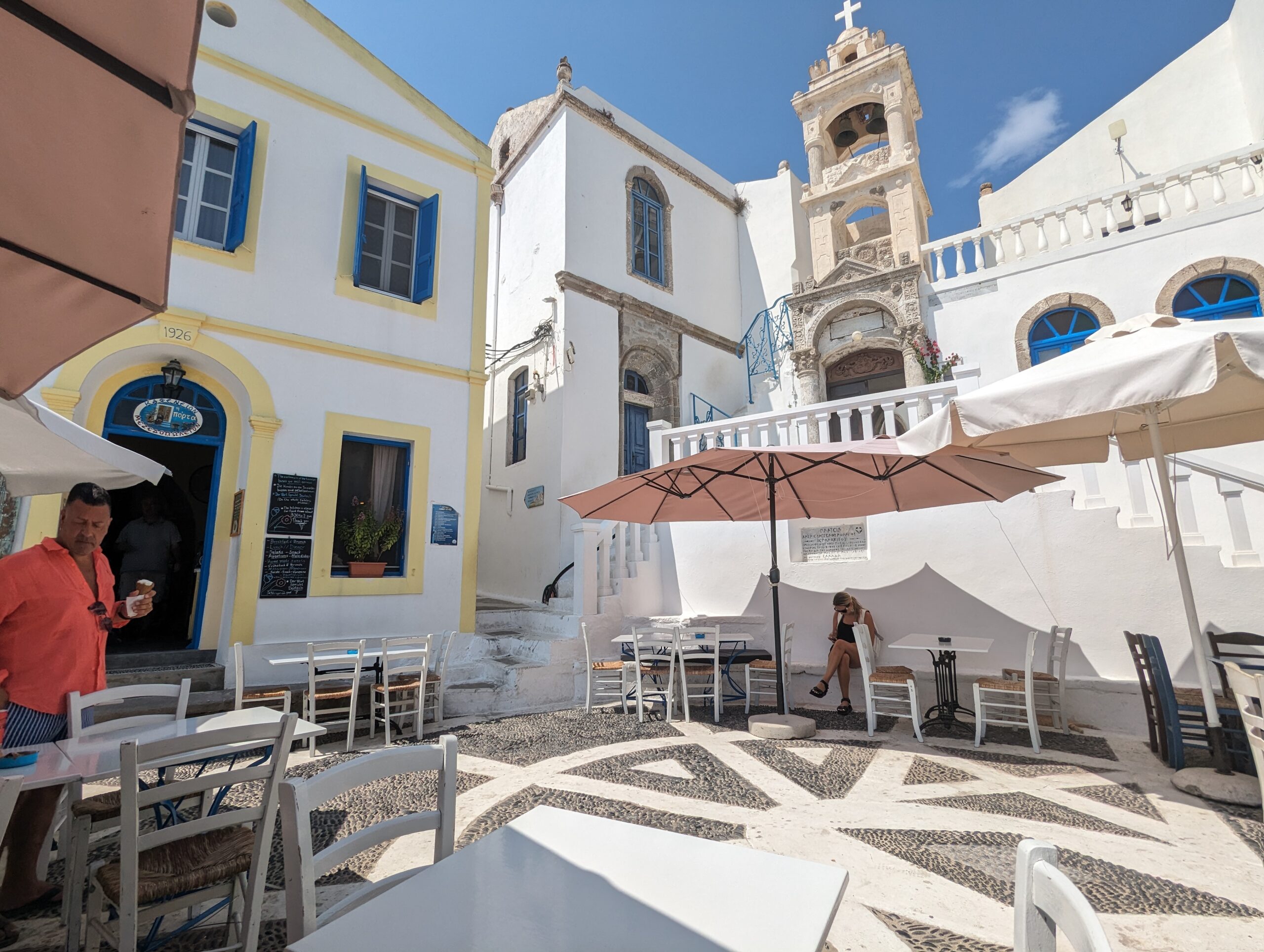

Tilos, an island almost 3 hours of motor-sailing the 18nm SE, was our next destination. The very small marina in Livadia on the east coast of the island soon filled-up within hours of our arrival. South of the marina was a broad bay (beach with small pebbles, no sand) which offered protection to late arriving boats. The population is around 725 and survives primarily on tourism. Tilos was reportedly the son of Helios and Halia and visited the island in search of herbs to aid his ill mother, although his name does not appear in Greek mythology. He later retrned to found a temple to Apollo and Neptune.

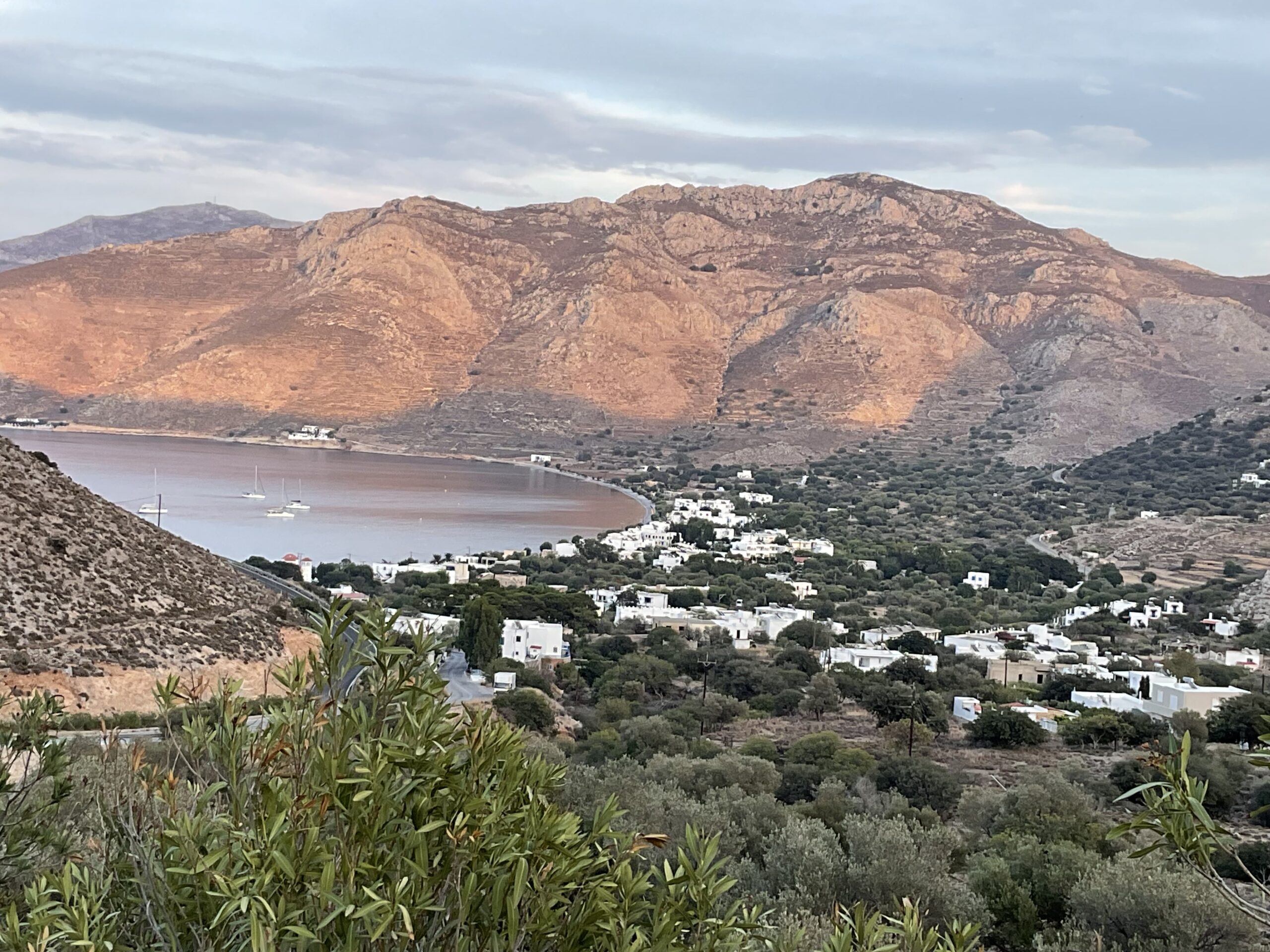
Our first stop after renting a car was to visit the cave at Charkadio and its small museum. The cave has a long history, with stone tools and pottery from the Neolithic era (8000-7000 BC) and most interestingly bones from about 90 dwarf/pygmy elephants (1.2-1.6m tall) from between 7000 to 4000 BC. Data at the museum suggested that most were killed when the volcano in Santorini erupted, with the elephants first hiding and then trapped in the cave. Theory suggests that the pygmy elephants evolved on Tilos because the original land bridge to the Turkish coast disappeared as the sea encroached, and as there was not sufficient food on the island their size diminished according to food availability.

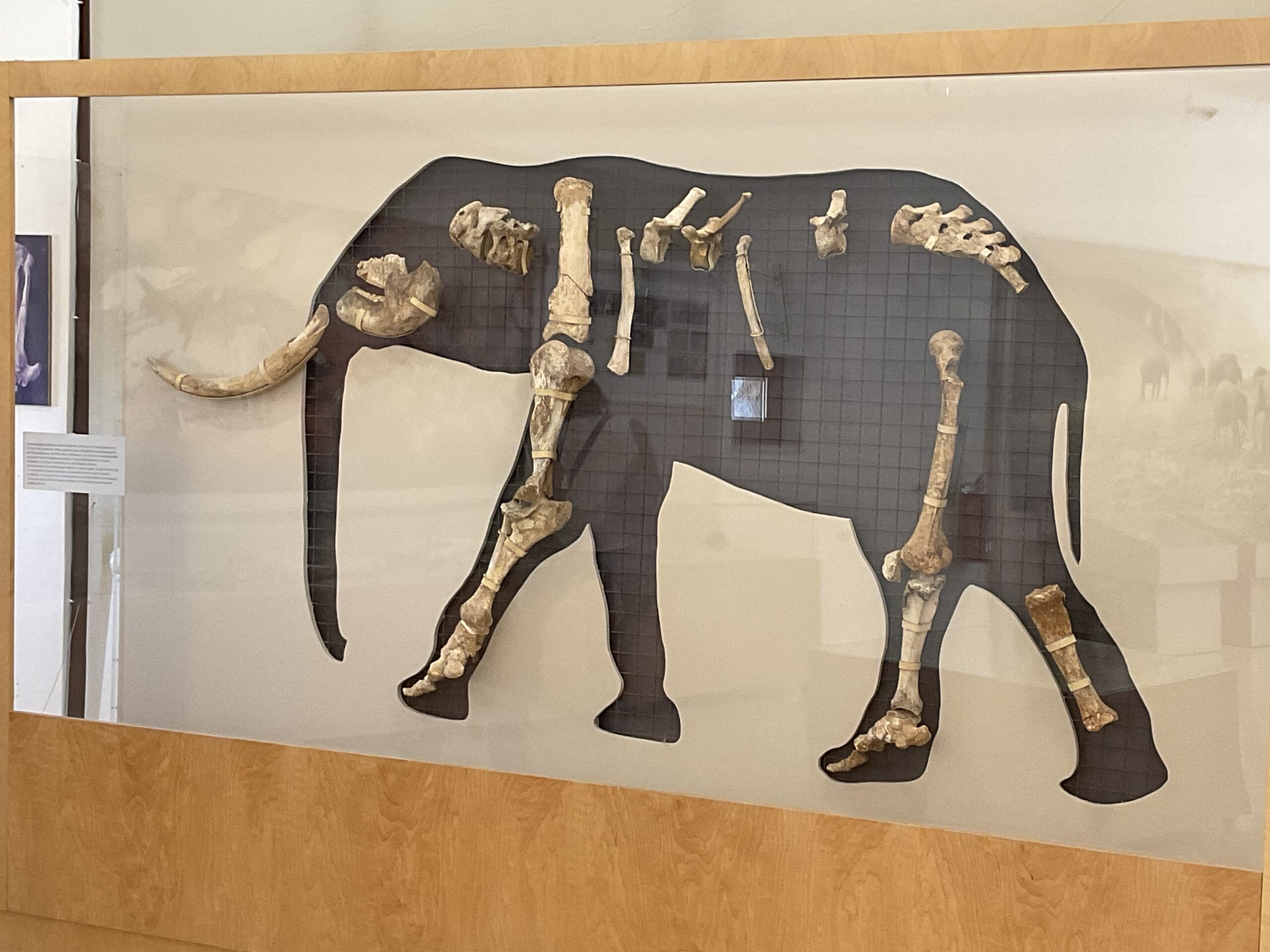
After the museum we drove a fairly tortuous route along the coast to a monastery perched on a mountain side overlooking the sea. It was interesting but not as incredible as the one on Amorgas. This monastery, Ayios Pandeleimon at 645m above sea level, was no longer inhabited by monks, apart from one overseeing tourist entry to the site. A small church with multiple candelabra and icons were its main feature. Lunch was in a small village at a restaurant overlooking a small harbour, which unfortunately had many plastic bags resting on the sea grass. Tilos is a quiet island, apart from when the tourist ferries arrived from Rhodes. I am sure the Knights of the Order of St. John, who built several castles on the island, starting in 1309, would have appreciated that the island is now energy self sufficient, after the installation of a wind farm, solar panels, and a battery bank.





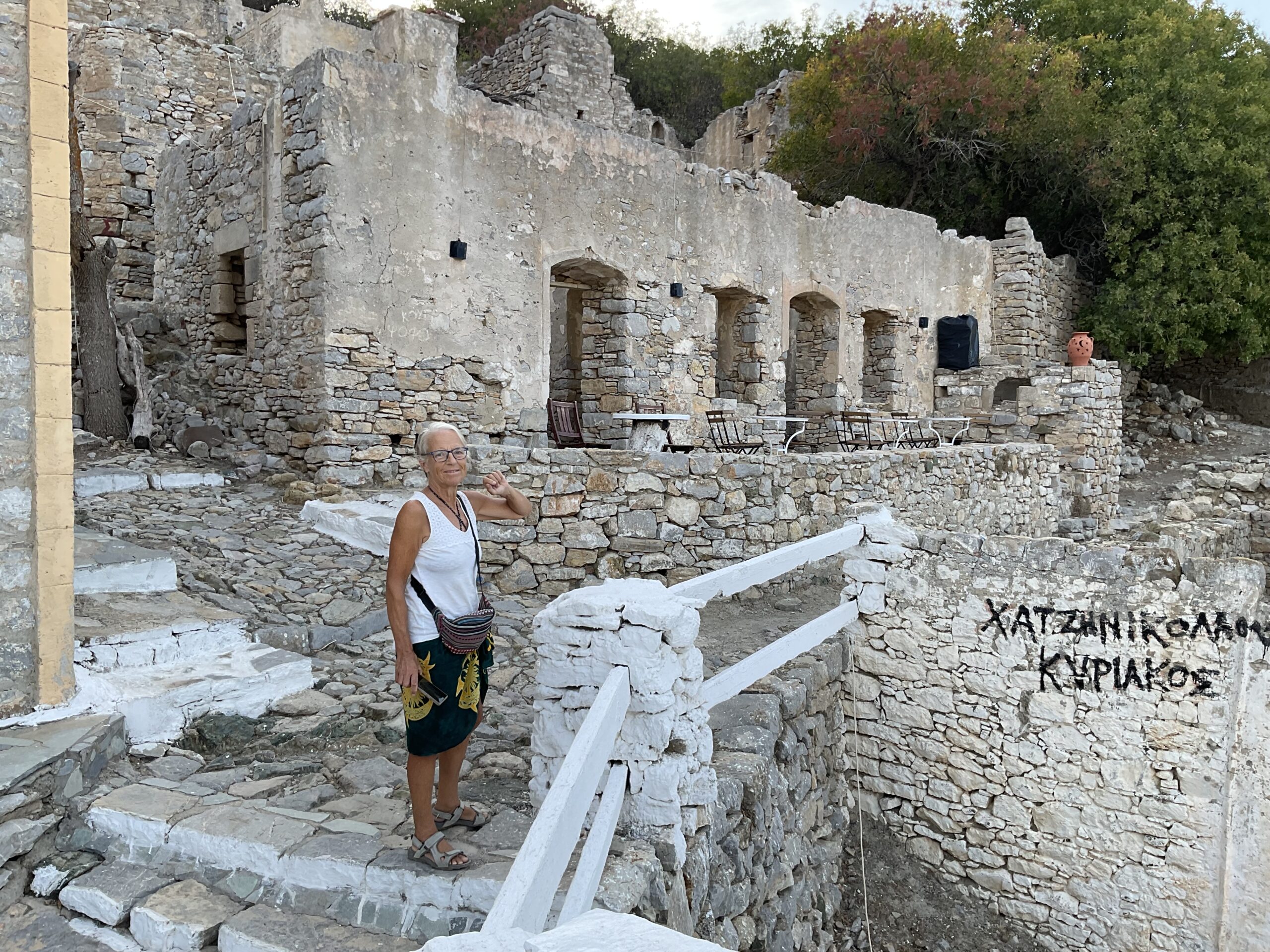

Our penultimate island stop with C&J was Symi. The population of Symi, excluding summer tourists, is around 2,500, rising to over 6,000 during tourist season. Its primary revenue source was ship building and sponges. Nowadays it is tourism. The 24 nm motoring passage from Tilos NE to Panormitis Bay on the SW corner of the Symi took about 4 hours. Oh for some good wind! The entrance to the protected bay was difficult to identify, but thanks to GPS we did not run into any rocks. On the east side of the bay is the Monastery of the Archangel Michael Panormitis, built during the 19th century. The waterside structure looks as though it belongs in Venice. Tourists arrive on the daily ferry from Rhodes. The church was very small, but with typical Greek Orthodox elaborate interior. The multiple services throughout the day, were accompanied by much bell ringing, the timing of which we could not rationalise.




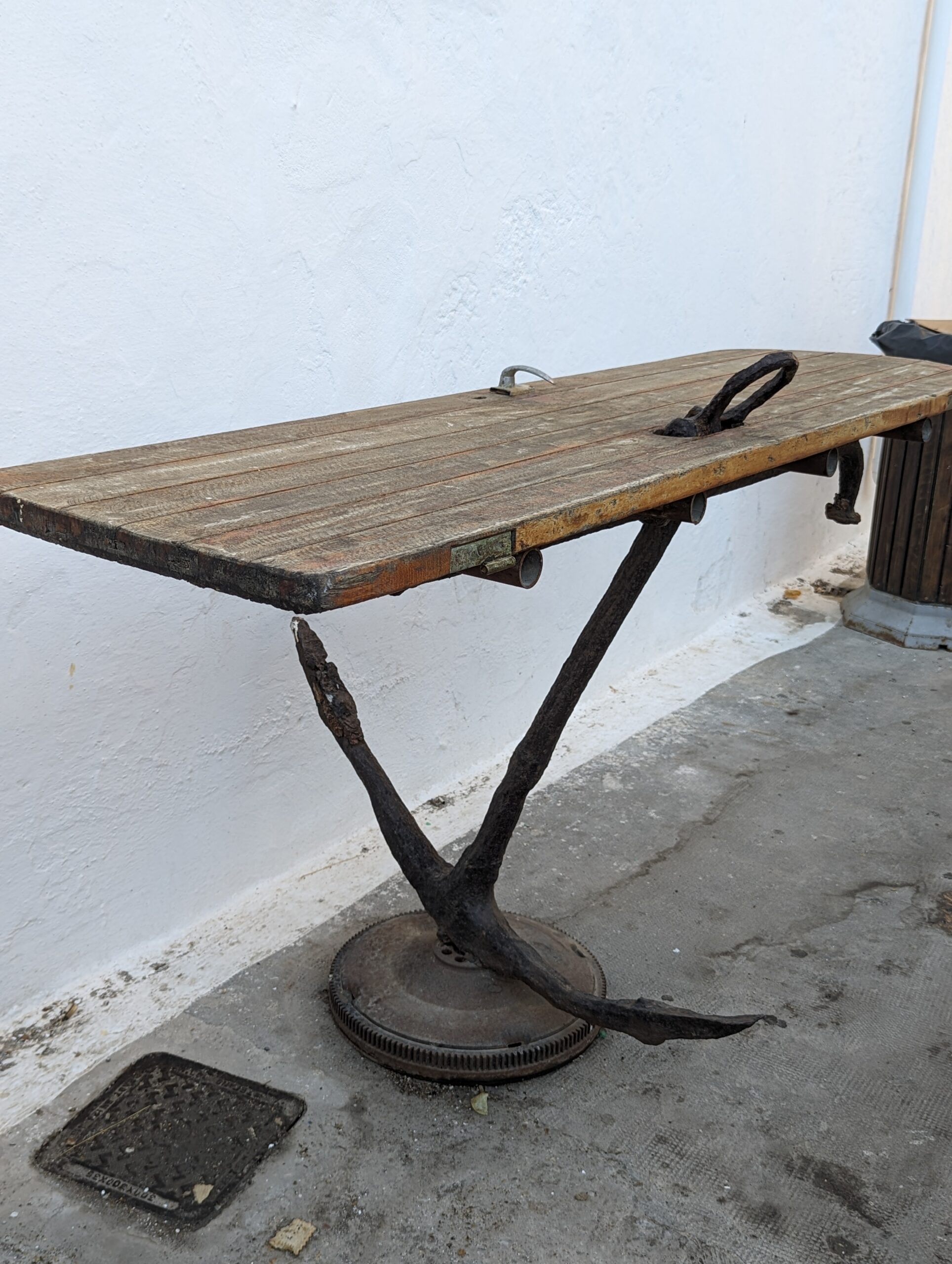
We took a bus from the monastery to Symi town, built around a large natural harbour on the NE side of the island. Symi is known for its mountainous terrain. It took about 20 min driving through multiple hairpin bends, as the elevation increased, before losing site on the monastery. Symi town is very colourful, with large mansions, built during the shipbuilding era, overlooking the town. During the summer months these days it is packed with tourists enjoying boutique clothes shops, shops around the harbour selling a variety of different types of natural sponges and loofahs, and many restaurants, some selling Symi’s shrimp, which are small, pan fried, and normally eaten with the shell.
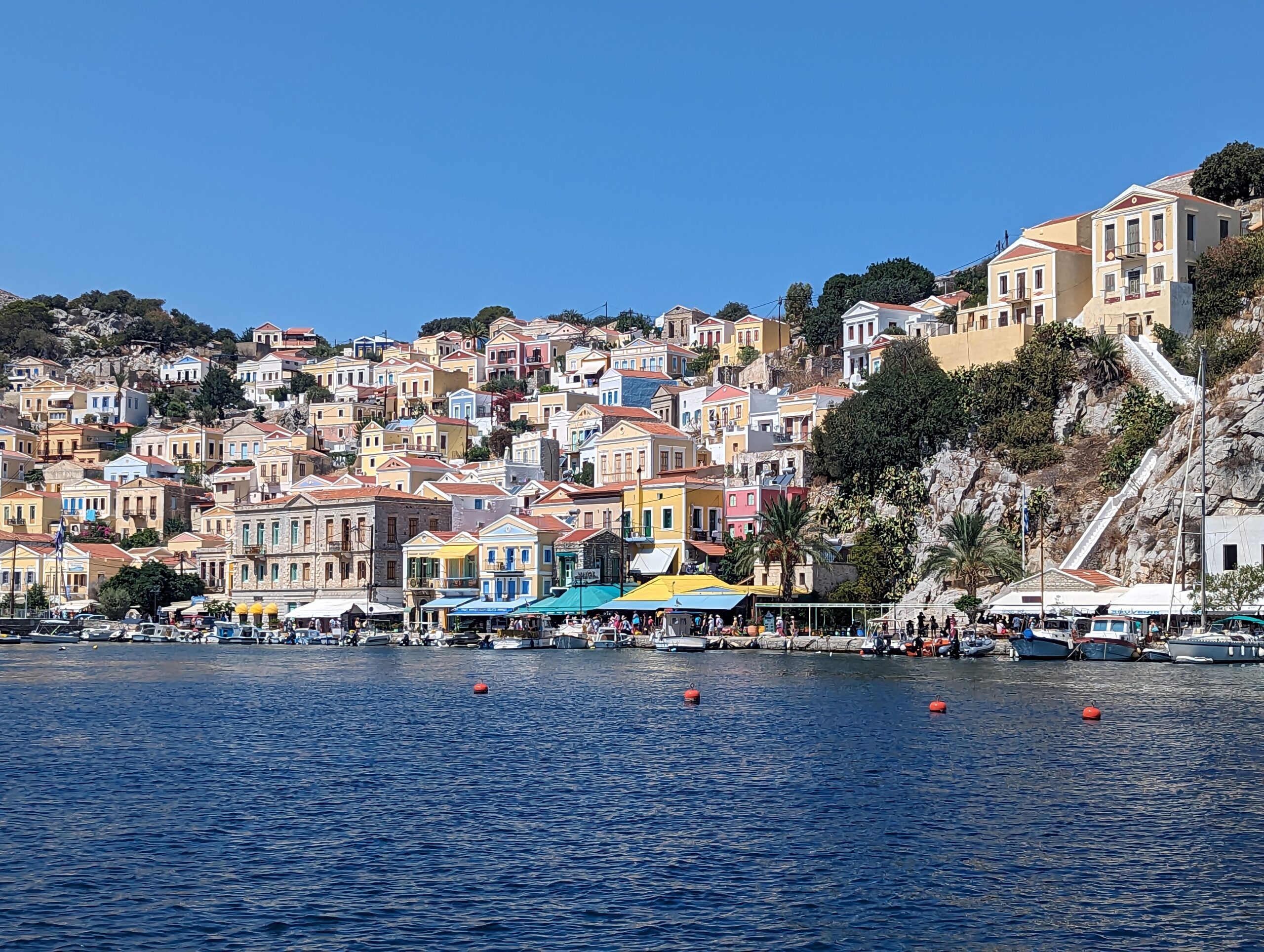
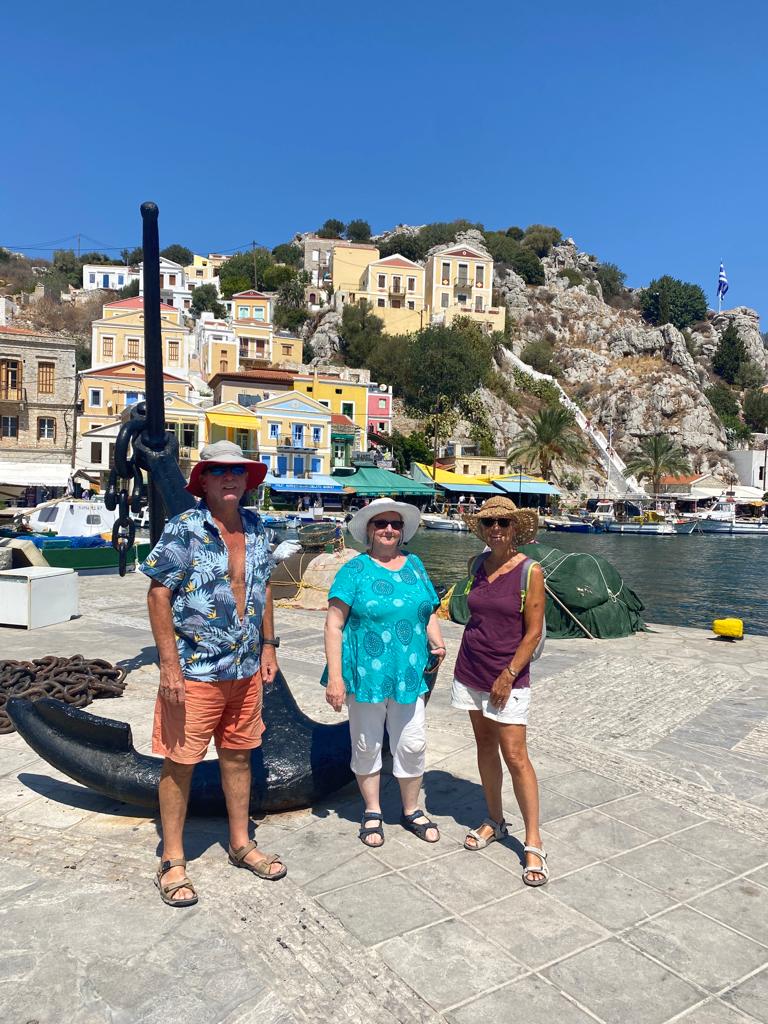
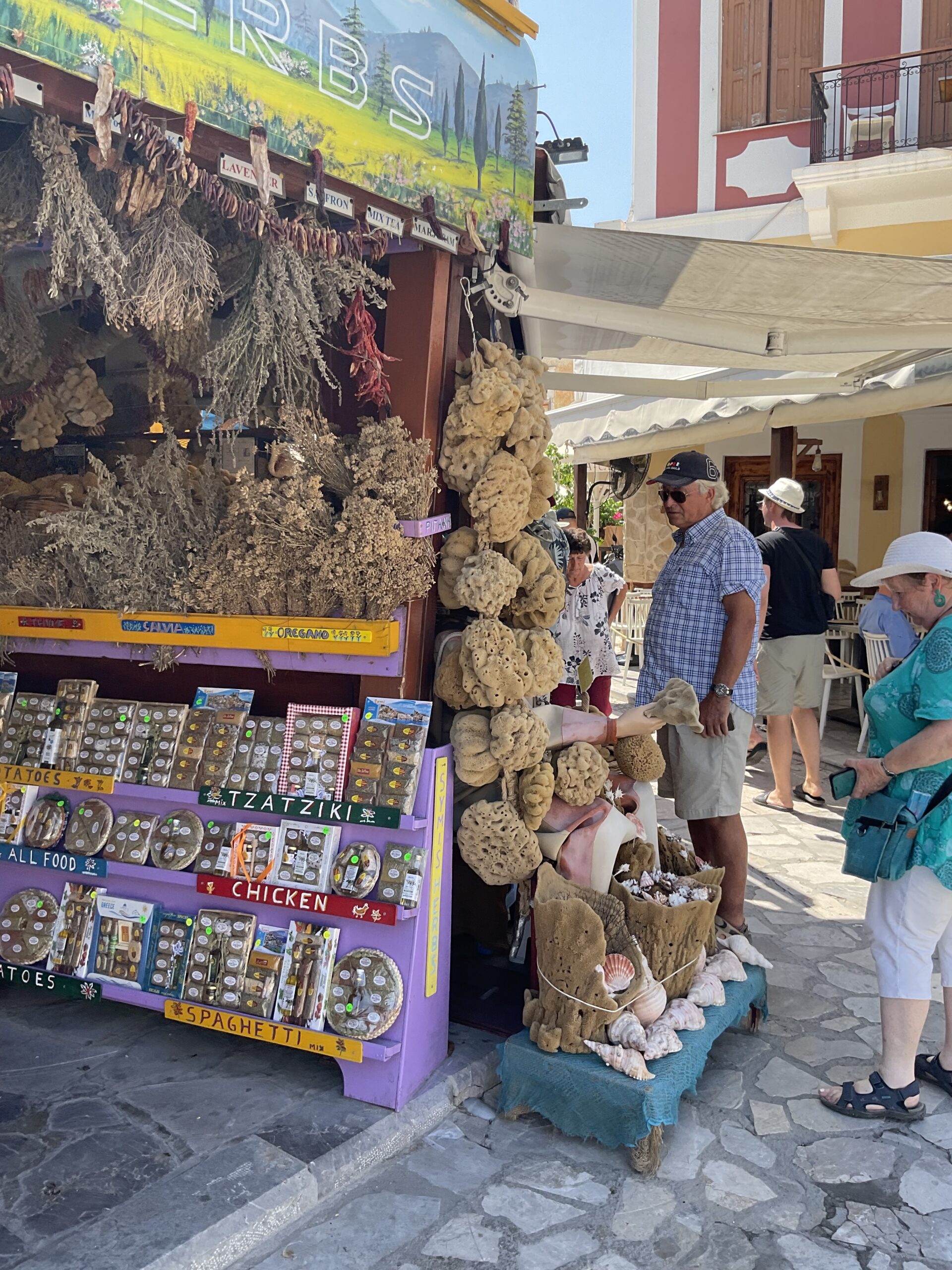
Symi was part of the Roman and Byzantine empires. In 1309 the Knights conquered the island and turned it into a center for trade, commerce, and ship building. It was chosen because of its strategic position in the eastern Med. Decades of prosperity followed. The Ottomans gained control of the island in 1522 and allowed commerce to continue. Sponges were a major source of revenue, especially in the 19th century. The advent of steamships led to its decline in strategic importance.
Unfortunately, C&J experienced more motoring with us than sailing. Even the 24nm last leg for them to Rhodes Marina was motored. Rhodes Marina on the SE outskirts of Mandraki is a large, relatively new facility. We enjoyed a very pleasant evening meal together at a local restaurant. The following day we had some drinks at lunchtime overlooking Mandraki marina, before we went our separate ways. On Sunday Sept. 19 we (H&H) departed Rhodes for Kastellorizo, 71 nm to our east. This was to be our last stop in Greece, and where we could check out.
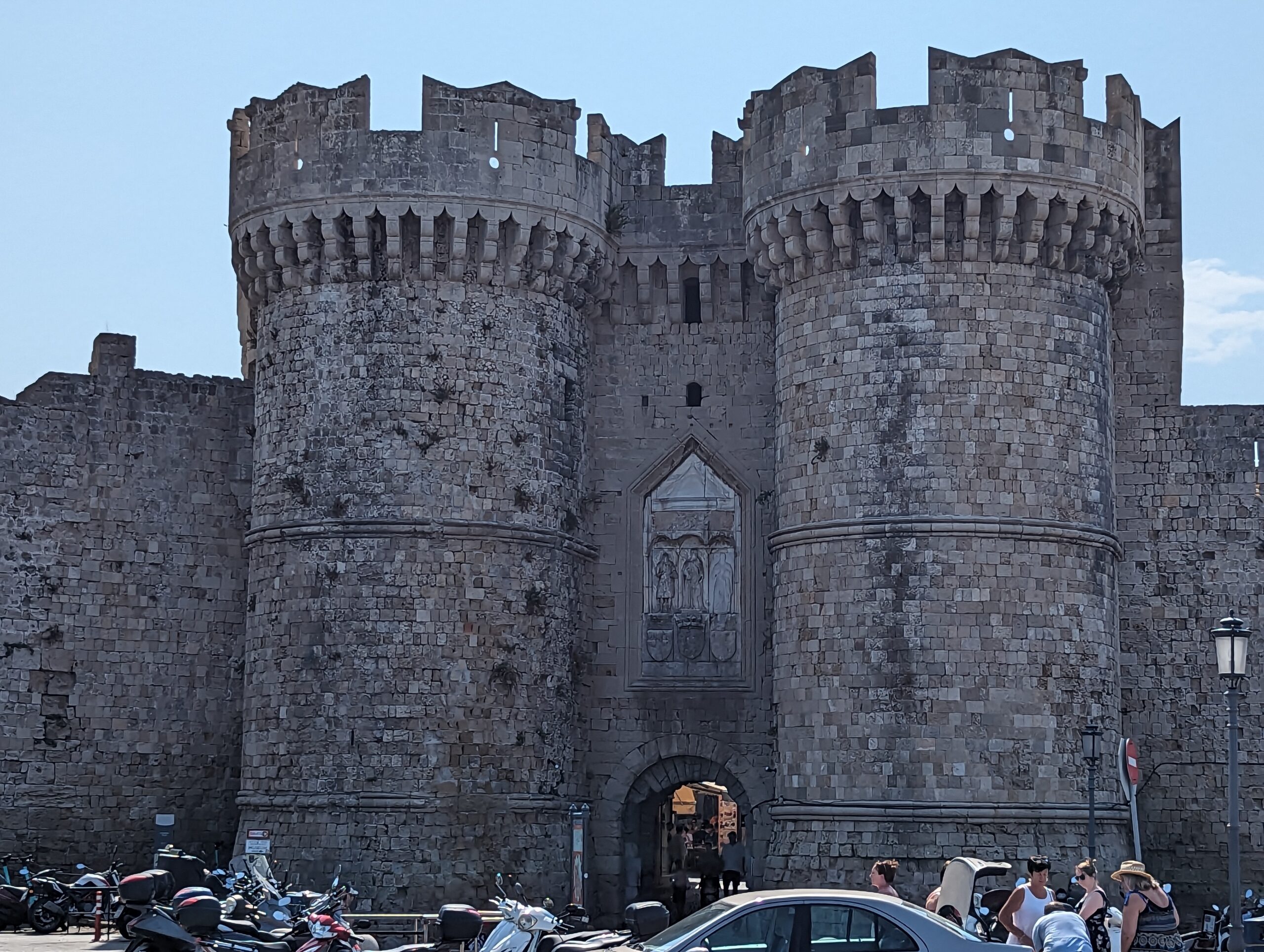
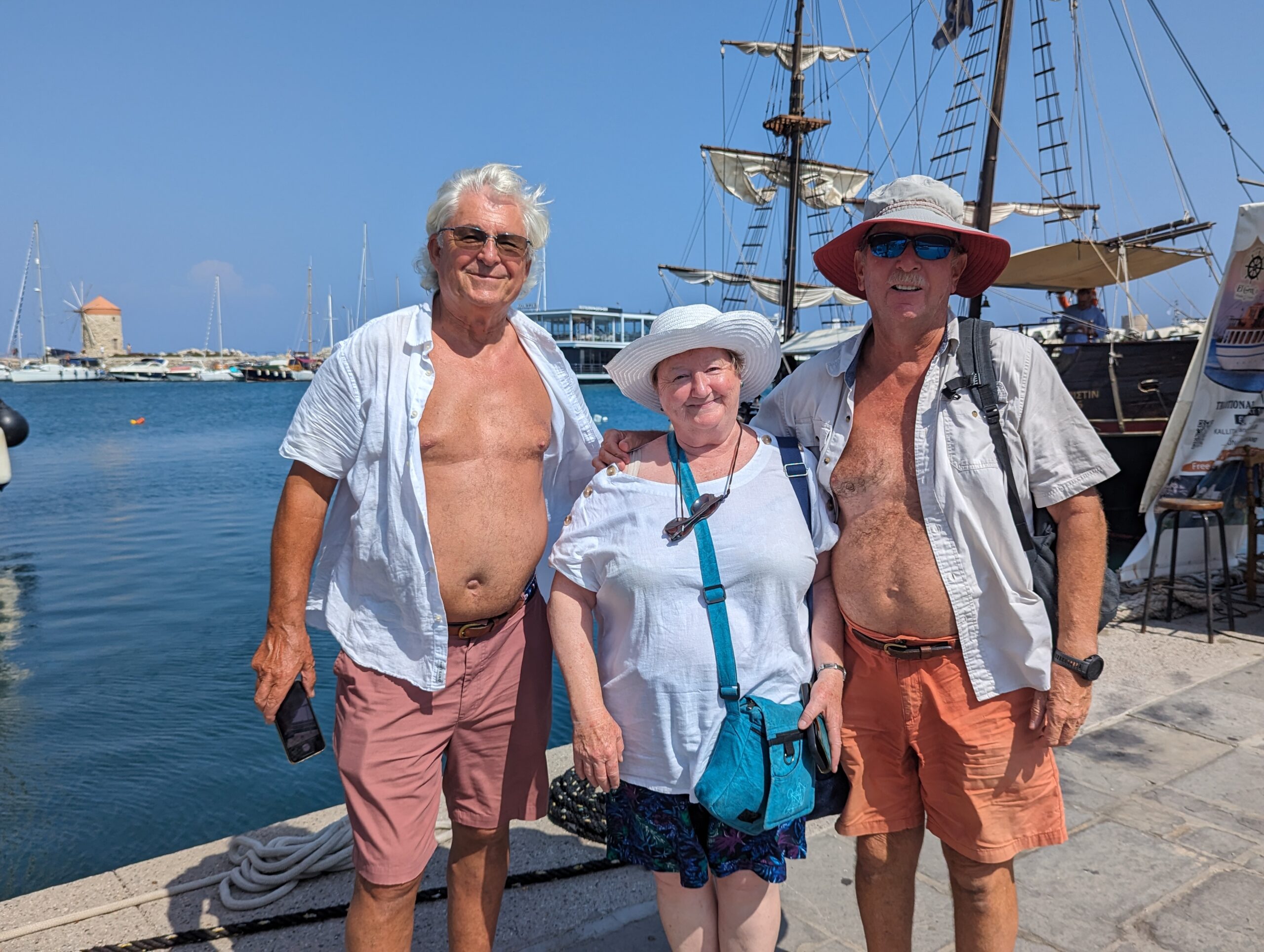
We motor-sailed most of the passage to Kastellorizo and anchored, with the bay to ourselves, in Mandraki Bay; a short dinghy ride to the main town/harbour. The buildings surrounding the harbour are quite colourful with many being converted into waterside restaurants Kastellorizo is the eastern most Greek island and lies about 2 km off the Turkish coastal town of Kas. It is mountainous, with a small population (<600, down from 9,000 in 1908) mainly around its well protected harbour. Its primary source of income is tourism. In the days of sail it was a major port between Fethiye and Alexandria, and also exported charcoal and sponges. During WW1 it was occupied by the French navy and was shelled from mainland Turkey. In WW2 it was occupied by the Italians and the British. it was bombed by the Germans, and many of the buildings destroyed. Most of the inhabitants left for Palestine and Australia. Many of the buildings behind the main tourist area are still in ruins, although renovations are in progress.
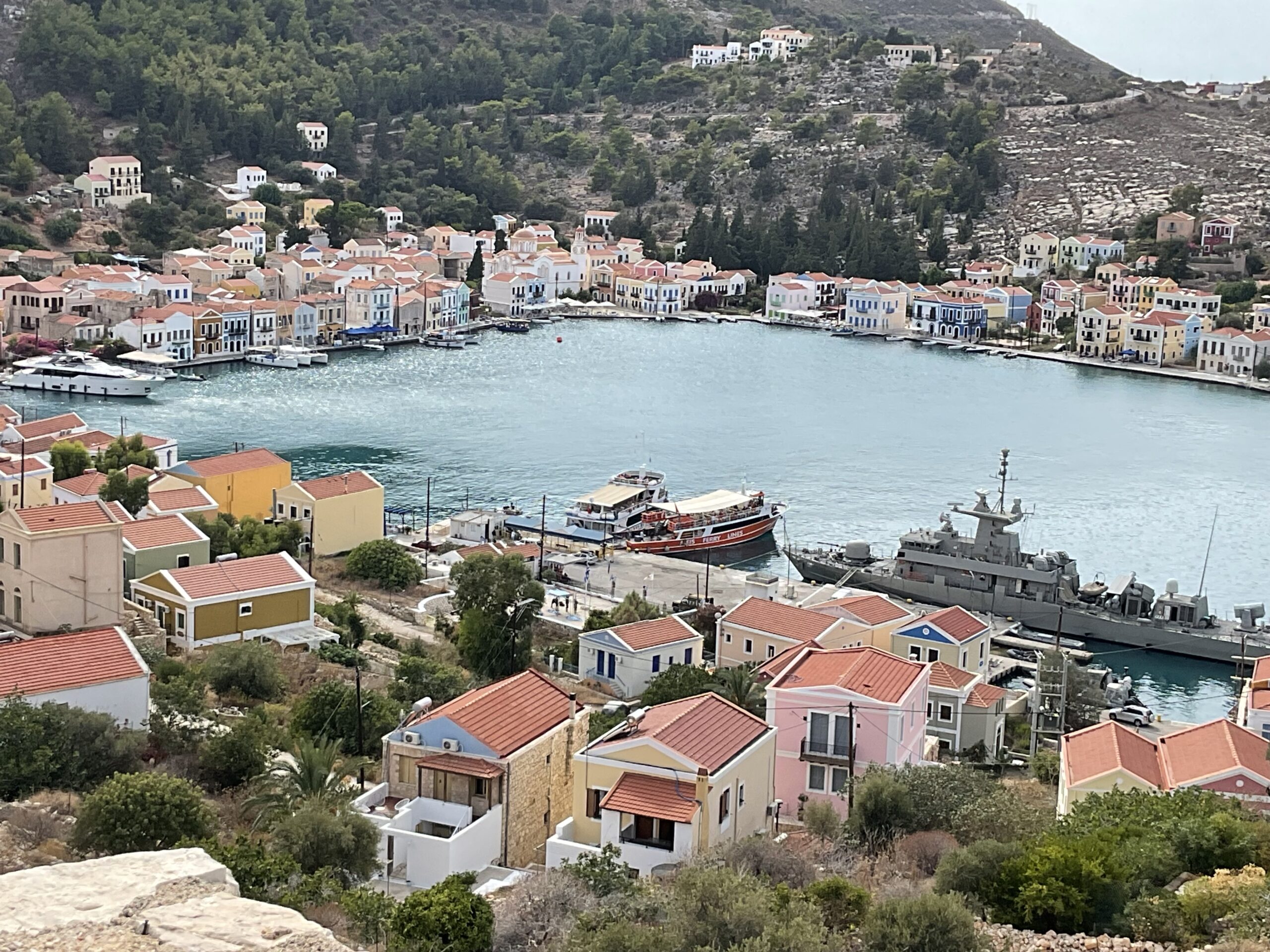


The ruined castle overlooking the harbour has been built and destroyed on numerous occasions. In 1306 the Knights Hospitaller had control of the island and rebuilt the castle on previous ruins. The Ottomans destroyed it in 1440, but it was rebuilt by the King of Naples in 1461. There is a Lycean-like tomb in the cliff face below the castle. The only Lycean tomb not in mainland Turkey.




After two peaceful days we departed Kastellorizo and Greece on the 32nm passage to Finike, Turkey; our home from home over the last four years. The downwind motor-sailing passage took us past Kekova, one of our favorite anchorages. Samet, our agent in Finike, very kindly sorted out all the paperwork for our entry and limited stay in Turkey. We are back where we started, after approximately 5.25 months, 1,300 nm, multiple stops in Turkey, and visiting mainland Greece and 17 of it islands; quite a season.


There are some major differences between Greece and Turkey. We were welcomed back to Turkey by the 5 times daily call to prayer from two mosques. The church bells in Symi were of short duration. The number of churches in Greece is beyond belief, both grand and small. English is widely spoken throughout Greece, not so in Turkey unless you are in tourist areas. Fresh produce is abundant in Turkey, especially in markets, which we did not find in Greece. Eating fish in restaurants in Greece is a lot more expensive than in Turkey. House wine (€8-14/L) is readily available in Greece, not so in Turkey, only bottles. Archeological sites in Turkey are generally bigger, more abundant, and less restrictive. Town docks in Greece, when available, are often excellent to moor, are cheap, and usually provide electricity and water. Marinas in Greece are often large, well built, relatively inexpensive, badly planned (reception and facilities a long way from docks) and lacking in toilet and shower facilities. Turkish marina toilet and shower facilities seemed to be planned around the number of boats the marina is designed to hold and are secure (card access). However, Turkish marinas appear to be pricing themselves out of the cruising market (roughly 3x the price of a night’s stay in a Greek marina). The atmosphere in Finike marina has changed markedly for the worse. The clientele now seems to be mainly Russian and Ukranian, with very few western European or antipodean boats; lots of empty spaces. We have really enjoyed our time (18+ months over a few years) in Turkey but will unfortunately probably not be spending much time there in future.
Our next stop is Karpas Gate Marina in N Cyprus, a 204 nm passage from Finike. We plan to be there early October and overwinter the boat there while we are in the UK and US.
2 Comments
Cheryll
What a wonderful momento for John and I from a very much enjoyed voyage together. We saw and did so much. So pleased you had some turtle sightings to help compensate for the marina changes in Finike.
Jenny
A wonderful description of your travels. ‘Lovely to see you all together.